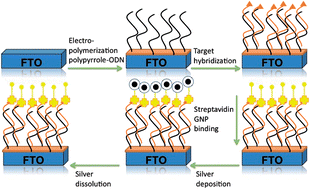Sequence-specific electrochemical detection of Alicyclobacillus acidoterrestrisDNA using electroconductive polymer-modified fluorine tin oxide electrodes
Abstract
This study outlines the quantification of low levels of Alicyclobacillus acidoterrestris in pure cultures, since this bacterium is not inactivated by pasteurization and may remain in industrialized


 Please wait while we load your content...
Please wait while we load your content...